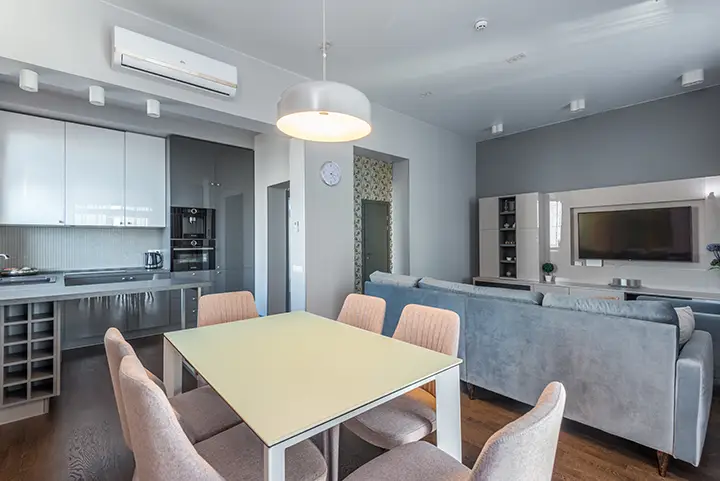Big air conditioning and heating systems are large-scale, commercial and industrial systems that provide climate control solutions for large facilities. These systems work by exchanging heat with the outside environment to cool or heat the interior of a building.
Big air conditioning and heating systems are often used in large office buildings, schools, factories, warehouses, hospitals, and other enclosed structures. They provide an efficient way to maintain a comfortable temperature throughout the building without having to install individual units in each room. These systems can also be combined with other energy-saving strategies like natural ventilation for further energy savings.
When selecting a big air conditioning or heating system it’s important to consider several factors such as size of the facility, desired temperature range, type of equipment needed (e.g., chillers or furnaces), power consumption requirements, and cost. The most common types of big air conditioning and heating systems include split system ACs/heaters (in which an indoor unit is connected to an outdoor unit via ductwork), central ACs/heaters (which use ductwork to distribute cooled or heated air throughout the building), and rooftop ACs/heaters (which are mounted on top of the roof).
The installation process for a big AC/heating system can vary depending on type of equipment selected but will typically involve installing centralized ductwork between indoor/outdoor units; connecting wiring between components; mounting components such as fans and coils; setting up refrigerant lines; calibrating controls; running tests; balancing airflow; cleaning filter elements; performing maintenance tasks regularly; adjusting settings periodically during peak usage periods; replacing parts when necessary; etc.
Overall, having a big air conditioning or heating system is essential if you want reliable climate control for your facility year-round. Not only do they help maintain comfortable temperatures inside buildings but they also help save energy costs long-term due to their increased efficiency compared to individual units used in each room or zone within the same facility.
